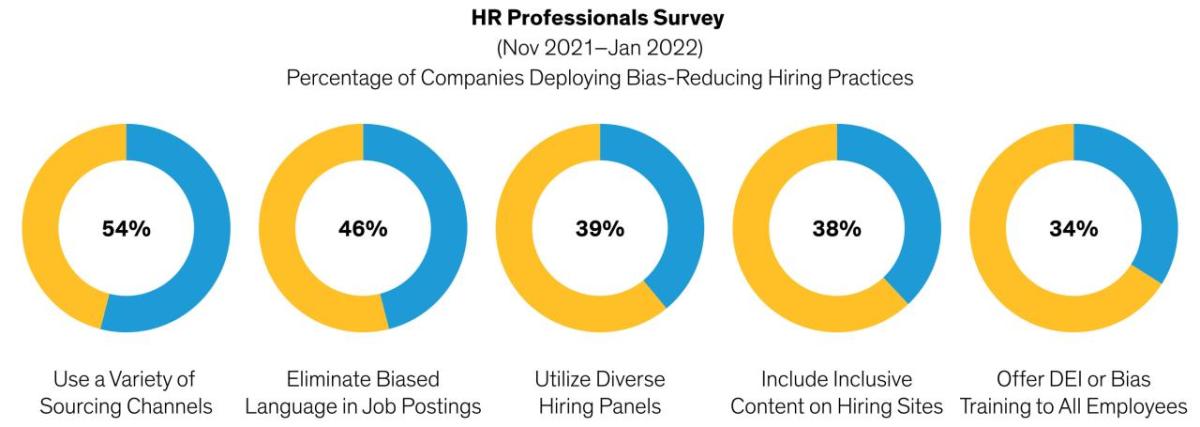AB: Help Wanted - Why Smart Companies Recruit for Diversity
Gayle Baldwin| Senior Research Analyst and Portfolio Manager—Equities
Vivian Lubrano| Portfolio Manager—Equities
Recruiting talent is a basic ingredient for business success. Companies that are more inclusive in their recruiting will discover better-qualified employees, which can bolster competitive advantages and help deliver better outcomes for investors.
More companies are discovering that policies promoting diversity, equity and inclusion (DEI) are good for business. Increasing evidence shows how companies that score high on measures of ethnic, cultural and gender diversity have delivered stronger profitability than lower-ranked peers.
But what’s the best way to create a diverse workforce? Many companies focus on meeting defined diversity quotas. That may not be the best approach, in our view. In the race to add more women or minorities to the payroll, human resources (HR) departments won’t necessarily get the right people for the job.
Instead, we think the key is to develop more creative methods to identify the most talented people for positions, by neutralizing biases that may prevent getting diverse talent on board. Even though many employers say they strive to make their recruiting processes fairer, most don’t do this systematically, according to a survey by the HR Research Institute (Display).
Investors should look for three types of inclusive recruitment tactics that signal a strategic fusion of forward-looking hiring and a diversity-driven mindset.
Redefining Qualifications: Behaviors, Not Pedigrees
Recruiters are easily swayed by flashy resumes. Degrees from top universities or professional experience at well-known companies can flatter a candidate. Yet many softer skills don’t show up on a CV and can make the difference between success or failure in a new hire.
Does the candidate have the creativity needed for the role? Is she comfortable questioning conventional wisdom? What about problem solving and intellectual curiosity? If a company could test for these aptitudes, it might find highly qualified workers that don’t meet the standard template for a given job.
Infosys, an Indian IT services company, did just that. The company wanted to expand its roster of US-based client-facing staff and identified critical thinking as a more important success factor for entry-level positions than an engineering degree. So, it partnered with community and liberal arts colleges in the US to identify students with critical-thinking skills who could then be taught how to code. These colleges tend to have proportionally more female and minority students. Tapping this pool of students enabled Infosys to grow and diversify its US employee base, better reflecting the diversity of its clients.
Diversity isn’t typically found behind the wheel of a delivery truck—widely seen as a man’s job. But SG Holdings, a Japanese trucking and logistics company, broke that mold. As it struggled to find enough male drivers in Japan’s aging population, SG invested in technology that helped redefine what capacities are required for roles that historically were more physically demanding. For example, investing in swap body trucks with interchangeable containers allowed the company to separate the tasks of loading trucks from driving them. As a result, SG now has more women, elderly and even disabled drivers steering its fleet.
Turning to Nontraditional Talent
HR departments often get stuck in familiar hiring patterns. Candidates are selected from similar types of colleges and companies, which limits diversity. Creative recruitment processes should be open to searching for pools of suitable talent in atypical places.
Consider the military, where safety and procedural compliance are paramount. Those are perfect attributes for a company like Herc Holdings, which rents heavy equipment for construction. Herc looked to US military veterans, reservists and National Guard members for new employees, and found what they were looking for in a very diverse pool of trained soldiers.
In Europe, refugees from the war in Ukraine and other hotspots might not seem like an obvious place to hire employees. Yet refugees are highly motivated people looking to rebuild their lives after fleeing home. Capgemini, the France-based IT company, launched a program in the UK to train and place refugees in digital jobs, helping to address a huge skills shortage in the sector. French cosmetics group L’Oréal also started to integrate refugees into its workforce in 2022. “The goal is to shift mentalities on migration and turn the challenge of integrating refugees and exiled people into an opportunity for businesses and the economy,” L’Oréal said at the time.
Reducing Bias from the Recruitment Process
Biases are perhaps one of the biggest obstacles to building a diverse workforce. Growing awareness of the issues has led to the creation of various tools that can help reduce bias and drive inclusivity.
Thermo Fisher Scientific, a US supplier of scientific instruments, scores all job postings with a tool that helps reduce language bias—words that might unintentionally inhibit potential candidates from applying. In the UK, industrial company IMI offers training in unconscious biases and requires headhunters to deliver gender-balanced slates of candidates; for three years in a row, half of the engineering graduates hired by IMI have been female.
Getting recruitment right is perhaps one of the most undervalued components of business health. We think investors with a diversity focus should pay closer attention to how companies find the right talent. Those that crack the recruitment formula will naturally diversify their staff base with employees who are a better fit for their jobs—and can help propel a company toward a more profitable future.
The views expressed herein do not constitute research, investment advice or trade recommendations and do not necessarily represent the views of all AB portfolio-management teams and are subject to revision over time.
References to specific securities are presented to illustrate the application of our investment philosophy only and are not to be considered recommendations by AB. The specific securities identified and described do not represent all of the securities purchased, sold or recommended for the portfolio, and it should not be assumed that investments in the securities identified were or will be profitable.



